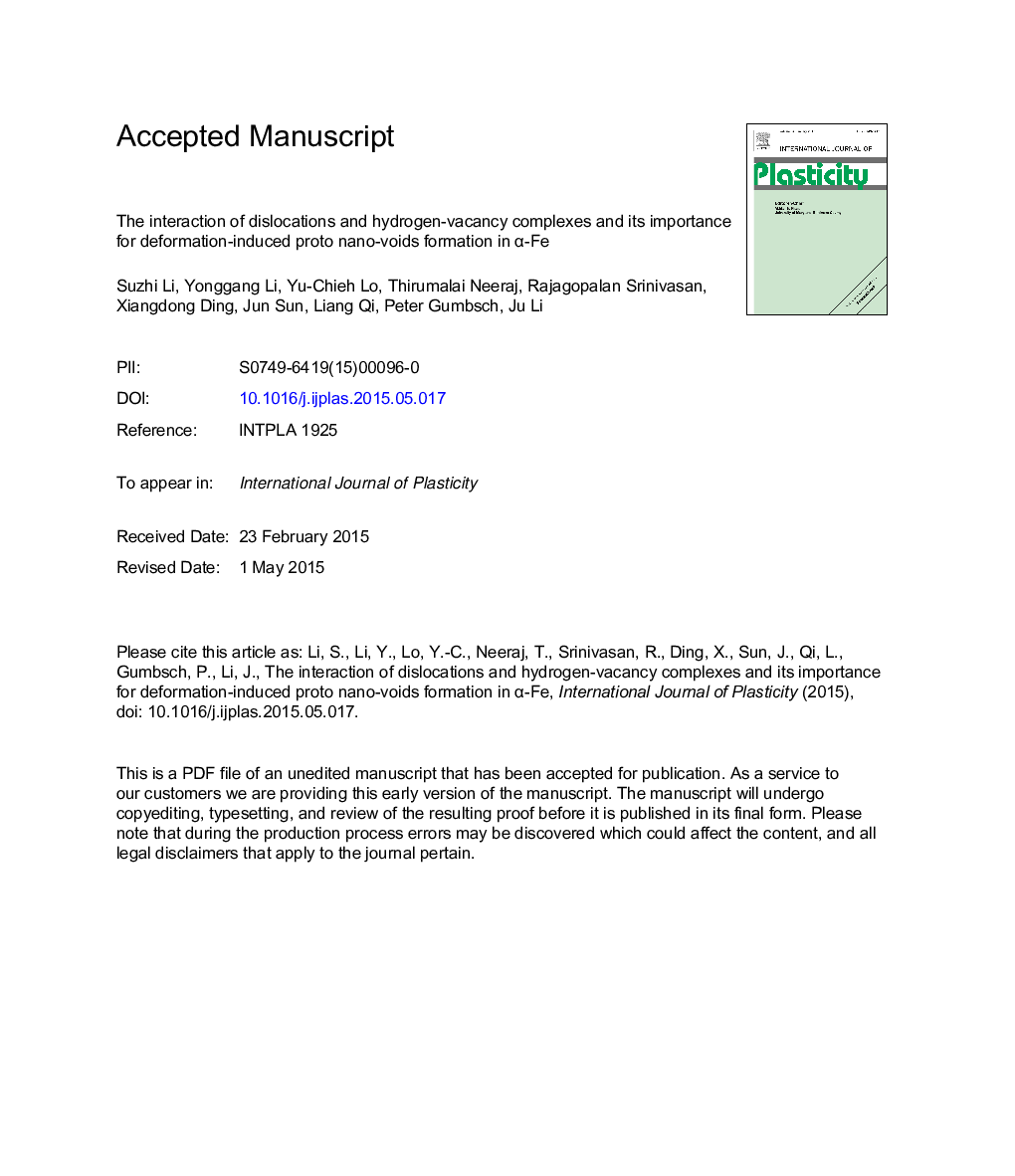| Article ID | Journal | Published Year | Pages | File Type |
|---|---|---|---|---|
| 7174971 | International Journal of Plasticity | 2015 | 46 Pages |
Abstract
By using molecular dynamics and cluster dynamics simulations, we probed the role of hydrogen-vacancy complexes on nucleation and growth of proto nano-voids upon dislocation plasticity in α-Fe. Our atomistic simulations reveal that, unlike a lattice vacancy, a hydrogen-vacancy complex is not absorbed by dislocations sweeping through the lattice. Additionally, this complex has lower lattice diffusivity; therefore, it has a lower probability of encountering and being absorbed by various lattice sinks. Hence, it can exist metastably for a rather long time. Our large-scale molecular dynamics simulations show that when metals undergo plastic deformation in the presence of hydrogen at low homologous temperatures, the mechanically driven out-of-equilibrium dislocation processes can produce extremely high concentrations of hydrogen-vacancy complex (10â5 â¼Â 10â3). Under such high concentrations, these complexes prefer to grow by absorbing additional vacancies and act as the embryos for the formation of proto nano-voids. The current work provides one possible route for the experimentally observed nano-void formation in hydrogen embrittlement of steels and bridges atomic-scale events and damage with macroscopic failure.
Related Topics
Physical Sciences and Engineering
Engineering
Mechanical Engineering
Authors
Suzhi Li, Yonggang Li, Yu-Chieh Lo, Thirumalai Neeraj, Rajagopalan Srinivasan, Xiangdong Ding, Jun Sun, Liang Qi, Peter Gumbsch, Ju Li,
